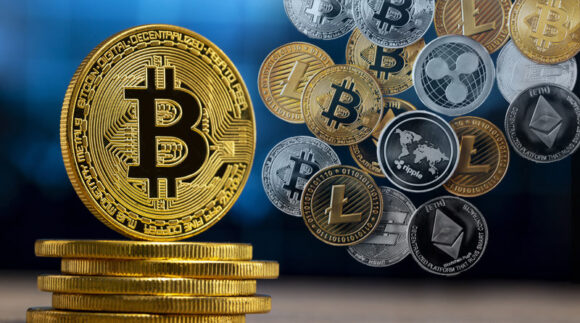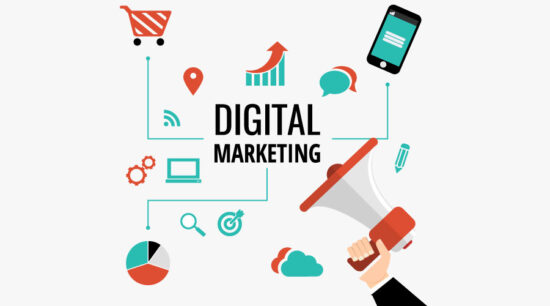


February 27, 2023
Eyes4Research
The online survey industry is a flourishing market. That’s not surprising due to the fecund waters of information that is the internet, regularly dipped into by businesses and academics alike as part of their market research methods. Like many aspects on the web, employing an online panel is alluring because of its effortless aspects.
Effortless is not always good in cyberspace, though. Oceans of information don’t necessarily create tributaries of accurate figures. To become truly survey savvy, it’s important to understand some myths that can hamper online survey projects. With these in mind, the quality of research can rise above the surf of diluted data.
1. Online panels are just waiting around to send surveys. Online survey providers aren’t storing respondents’ data like the Architect in The Matrix. Sites like Amazon’s Mechanical Turks do house millions of respondents ready to take surveys; yet these are teeming with what is known as river sample (the Mos Eisley of general population sampling, although not really a hive of scum and villainy). In reality, it takes energy, resources, and continual project management to maintain online panels of good quality.
What this means: Be patient before and during an online survey project—especially if you are asking for a specialized sample with a low incidence—like (Irish Na’vi who smoke Montecristos).
2. The more questions you ask, the better data you’ll get. This seems (almost) logical. Many companies seem eager to bloat their questionnaire template for their research project. However, we demonstrated the opposite in a previous blog. Research indicates that shorter questionnaires result in superior data. Byzantine and long questionnaires instill what is known as “respondent fatigue.” As the New York Times reported, respondent fatigue that has caused “declining response rates over the last decade.”
What this means: Keep it short and sweet like a tweet. Keep in mind that any survey over 20 minutes is asking for Mos Eisley-type results.
3. Survey results come back in quickly. Sure, this is the internet age, where even breaking news is dated after reading the headline. However, respondents are still flesh and blood people with their own lives (probably spent online in other avenues). Not only do online panelists have to be recruited and engaged, but they also have to be incentivized and called to action. Additionally, results have to be analyzed carefully. The best enterprise software is still beholden to the gateways of internet providers (like that speed-demon AOL!). In other words, it’s a bit more than putting up a Facebook post and waiting for ‘likes’ to rain down like batteries at a Philadelphia Eagles game.
What this means: Beyond being patient, you know something IS actually fishy if results arrive too quickly—as an average project typically takes 3-7 days. Then it’s time to call your online survey provider, and get close to accusing them of being a hive of scum and villainy.
Incentives are not that necessary because of shared interest. Some would call this cheap thinking. It is. It just doesn’t work that way. For example, our company specializes in veterinarian panels. These good folk are physicians who work very hard. For a veterinarian to leverage time to sit through a 30-minute survey takes quite a bit of labor and compensation. Like any other sample, the smaller the reward the larger the risk of apathy. Lastly, many online providers understand this crucial aspect of incentives: “Promised incentives are not as effective as enclosed incentives. Numerous studies demonstrate that postpaid incentives have no impact on response rates.”
What this means: Online survey providers are well-aware of how to incentivize their panels, and many will do so before the project is live if it’s a specialized audience. For those Irish Na’vi who smoke Montecristos, expect a steep price due to the incentive alone, but know you will be rewarded with the data you need.
People are patient taking online surveys. This should be an obvious myth to dispel, since we are talking about the internet: the Nirvana of short-attention-span. In real life, people are busier than ever, continually bombarded by other information, and are just not going to be passionate about your research. This may sound callous, but an honest approach goes a long way for that empathy to conduct successful online research.
What this means: Short questionnaires, patience on your part, expected incentives…and online surveys can actually become wealthy avenues of communication and even qualitative market research.
Dispelling these myths is also extremely important because of the future of online surveys: mobile technology.
As a recent white paper on Research stated:
“Mobile growth in online surveys is mirroring overall growth in mobile access to the internet with survey starts on mobile and tablets rising from less than 10% of survey starts in 2011 to more than 25% of survey starts in 2014 according to 2014 Trends Report: Mobile Participation in Online Surveys.”
There are certainly disadvantages of mobile surveys, as we’ve discussed in past publications. Regardless, in the online world, screens are getting smaller, space is getting tighter, and time is getting shorter. With the right approach and understanding of these myths, market researchers can become survey savvy and come out of those internet waters with refreshing results for their research.

February 27, 2023
Eyes4Research
The veterinary industry is complex and among the most competitive globally. The number of consumers needing veterinarian services is growing and the landscape of animal health and welfare is ever-changing, with more pet owners looking for high-quality products to optimize the health of their pets. Here are 6 trends that are helping to shape the future of veterinary services.
Lockdown-Fueled Pet Ownership Rise
The loneliness and boredom that many people experienced during lockdown prompted a rush of people wanting a pet to pass the time with. While some of the households that brought pets home during this time have since rehoused those animals after going back to the office, there was still a rise in pet ownership during the COVID-19 pandemic that has carried over, post-pandemic.
Smart Pet Gadgets
Pet products powered by technology are everywhere and are making being a pet owner a little easier for consumers. Companies like Petcube, which has introduced a camera that attaches to a pet collar which allows the owner to view a live-streamed account of what is happening at home, including a pet’s everyday activities. Other ‘smart’ pet products include feeders that deliver food items straight into a bowl and trackers that help owners find pets who have wandered away from home.
Pet-Friendly Housing
According to the American Veterinarian Medical Association, it is estimated that there are 21 million households with pets in the U.S. alone. If companion animals were thrown into the mix, that number would be closer to around 23 million. This has created a vast market for pet-friendly homes as people are looking for housing that allows them to live with their pets. A recent study by the American Pet Products Association revealed that there was an 8% increase in the sale of pet-related products in 2021, including pet food, toys, accessories, etc, which may be attributed to this trend of consumers choosing pet-friendly housing options for their homes and offices.
The Rising Market for Exotic Pets
Not to be outdone by cats and dogs, there is also a growing market for pets that are a little out of the ordinary, like birds, snakes, and even spiders. Because these animals are more low-maintenance than cats and dogs, this category of pet has become more popular with higher-income consumers. The American Pet Products study mentioned above also found that 12.2% of American households currently care for one or more types of pet in addition to a dog or a cat, an increase from 10.8% over the last five years. This data points to a robust market for a wider variety of household pets.
Adopt, Don’t Shop Campaigns
A recent study by the National Pet Alliance revealed that there are more than 10 million pets in shelters across the U.S. But even with that staggering number of pets waiting to be adopted, most people still buy pets instead of adopting them from shelters. To reverse this trend, there have been several awareness campaigns launched in recent years encouraging people to adopt their pets instead of shopping for them at pet stores. These campaigns have included adoption drives at local shelters, which often waive or drastically reduce adoption fees for the duration of the drive, as well as social media campaigns.
Wellness Isn’t Just for Humans
Wellness, specifically in the form of vitamins and probiotics, is becoming more common for pets, as their owners look for ways to keep their furry friends as healthy and happy as possible. The pet supplement industry is growing and veterinarians are helping owners learn more about how to be more intentional in the care of their pets, beyond yearly checkups and feeding them the right food. Even other health issues, like anxiety and stress, are on the radar of pet owners, as they seek advice from their veterinarians on products like CBD supplements. Relatively new on the market for pets, CBD supplements come in the form of oils and chews and can help alleviate anxiety and chronic pain in cats and dogs.
Keeping up with consumer trends is crucial for every industry. Veterinarians have many challenges to navigate in their daily practices, but staying in the loop with what consumers want and need will allow veterinarians to give their clients higher-quality advice and build deeper and longer-lasting relationships with them.
Read more about consumer trends on the Eyes4Research blog. Eyes4Research also has everything you need to collect high-quality insights from veterinarians and pet owners. Our online panels are made up of B2B, B2C, and specialty audiences ready to participate in your next research project. Learn more about our specialty online panels here.

February 23, 2023
Eyes4Research
It’s still early in the year, but we can probably already list conversational AI, especially ChatGPT, as one of the buzziest topics of 2023 so far. ChatGPT, a model of GPT (generative pre-trained transformer) has become one of the most popular apps, with 13 million people downloading the app in January 2023 alone. Among other capabilities, these generative models can emulate human conversations and even mimic the writings of long-dead historical figures.
While there is worry about what ChatGPT will mean for students trying to cut corners on their coursework and how this technology will affect white-collar jobs, brands are also figuring out how this conversational AI can be put to work in their daily operations. More specifically, how can ChatGPT be applied to customer service operations, such as call centers, self-service, and other customer engagement needs?
Adapting ChatGPT to Business Operations
In order for AI to be ready for adoption by businesses across the board, it will have to evolve past beyond just being able to ‘talk’ about business-related topics in general terms. To be effective, this technology needs to be fully versed in how businesses operate– what terms are used, the context in which to use them, and understand how those terms drive decisions within organizations.
AI might be exciting to experiment with and is promising in the possibilities for its applications, but it isn’t an all-encompassing solution for customer service yet. Because of the pre-training aspect of ChatGPT, it can only process and work with whatever basic information it has been programmed with. There isn’t much allowance for nuance, which is important where customer service and customer experience are concerned. The technology will be able to generate sentences and explanations that are general in nature and maybe even address the needs of some customers, but it may seem largely incomplete in comparison to an interaction with a human agent.
AI technology can easily make conversation, but it is not able to deliver accurate information that is specific to a brand’s company when it is tasked with handling a more complex business interaction. And it will not be trained to deal with the specifics of any individual business, nor would it be able to answer questions related to products and services such as customer warranty claims. A situation where the wrong information is given to a customer or is received incorrectly could lead to a disastrous result, such as money being deposited into the wrong account, for instance. In a circumstance like that, customers will likely not be more forgiving because it was a chatbot that made the mistake and not a live agent.
5 Benefits of Using AI and ChatGPT for Customer Service
As the future of ChatGPT and chatbots continues to evolve, this technology will play an increasingly important role in in how companies interact with and serve their customers. But it will also be important for brands to be thoughtful in how they navigate the challenges and limitations of the use of chatbots in customer service.
Read more about the latest tech trends on the Eyes4Research blog. Eyes4Research also has everything you need to collect high-quality insights from tech consumers. Our panels are comprised of B2B, B2C, and specialty audiences ready to participate in your next research project. Learn more about our specialty panels here.

February 20, 2023
Eyes4Research
While it may have taken a while to gain its footing, the short-term rental industry has been growing rapidly, with an increasing number of travelers opting to stay in rented accommodations instead of a traditional hotel. With a wide range of options– from luxury beachside villas to basic apartments located in city centers, vacation rentals have become a popular option for many travelers. Travelers, especially those who travel often, state that vacation rentals are often less expensive than hotels, they offer more privacy and space than hotels, and the rentals allow travelers to ‘feel like a local’, by staying in residential areas.
A Quick Overview of the Vacation Rental Industry
In recent years, the vacation rental industry has been one of the fastest-growing sectors of the tourism industry. According to a study by ResearchAndMarkets, the global vacation rental market was valued at $169.9 billion in 2020 and is expected to reach $220.4 billion by 2024, growing 6.3% over the forecast period.
According to a report by McKinsey & Company, the vacation rental industry has benefited from the post-pandemic travel boom, as travelers look for more spacious accommodations and more flexibility overall. A different report by Phocuswright revealed that the vacation rental market was expected to continue to grow, as a result of the demand for more alternative forms of accommodations and the rise of online booking platforms.
The pandemic has changed what people look for when they plan trips and there are a few notable trends to be aware of in order to understand more about what consumers want now when they travel.
Eco-Friendly and Sustainable Travel
Environmentally-aware travel has been part of the tourism landscape for a while, but sustainable travel has reached peak popularity post-COVID. According to a report by TripAdvisor, the trend towards sustainable travel has seen a significant increase in 2022, with 45% of travelers stating that they would choose sustainable or eco-friendly accommodation over a traditional hotel, with an eye toward reducing their carbon footprint while on vacation. Travelers are also increasingly interested in real estate where energy-efficient systems are installed, renewable resources are used, and waste reduction is encouraged is in high demand.
The Impact of COVID-19 on Vacation Rentals
As the world has started to learn to live with COVID, the experience of having lived through the pandemic has had a lasting effect on what travelers are looking for when they look for a place to stay while on vacation.
Increased Demand for Unique, Local Experiences
Travelers are craving special and authentic local experiences as a substitute for stand hotel service. They want an immersive cultural experience, close to where they are staying. According to a report by Airbnb, 60% of travelers stated that they would choose an authentic local activity over a tourist-focused destination.
Virtual Tours Before Booking
Finally, an up-and-coming trend is consumers being able to virtually tour potential accommodations before they make their reservations. As mentioned earlier, many people are more cautious about health and safety concerns and want to make sure that they are making informed decisions about where they are staying before they make their reservations. While not yet widespread, these 360-degree tours of the interiors and exteriors of rental properties will become more commonplace as more travelers continue to search for alternatives to hotels.
Read more about the travel industry on the Eyes4Research blog. Eyes4Research also has everything you need to collect high-quality insights from consumers in the travel audience. Our panels are comprised of B2B, B2C, and specialty audiences ready to participate in your next research project. Learn more about our specialty panels here.

February 20, 2023
Eyes4Research
Among the many things that consumers will have to consider in the coming years, but is rarely thought of, is the nature of our money. Let’s face it, since the first coins were minted in Lydia more than 2,500 years ago, little about currency has changed. Paper currency was first introduced during the Song Dynasty in the eleventh century and then the concept slowly made its way to Western Europe by the end of the Middle Ages; yet things haven’t changed much in the last 700 years. Yes, credit cards, debit cards, payment apps, and online payment systems now dominate, making ours the first “cashless society,” yet we may be on the precipice of a major economic evolution from a cashless economy to a truly digital economy. If this change happens, it will have major implications for investors, companies, and consumers, and how different brands position themselves during this transition, particularly how it relates to their customers, will position them for success.
If you follow macroeconomics or consumer and financial trends, then you’ve probably heard about calls for digital currencies. Advocates of digital currencies come from governments, especially central banks, but also some private companies that believe digital currencies will be beneficial for their bottom line. Most people, though, aren’t aware of the potential transition to digital currencies, or even what they are. The biggest barrier to understanding digital currencies usually involves them being confused with electronic currencies. Simply put, today all national currencies are electronic currencies because transactions can be done electronically as well as with physical cash. In theory, digital currencies will also be transacted electronically, but the key difference is that they can only be done electronically. There will be no paper money in digital currencies. Digital currencies have some similarities with crypto currencies, and will utilize many of the same technologies, so it may help to view them through the crypto lens. It’s important to point out that the major difference is that most crypto currencies are decentralized and written with open source codes, while digital currencies will be controlled solely through the central banks that issue them. So now that we know what digital currencies are, let’s look at how they came to be and what impact they could have on future consumer trends.
From Crypto to Central Banks
There’s no doubt that digital currencies are the product of the Computer Age, but the route they took from fringe ideas to a reality has been somewhat circuitous. Computer scientist David Chaum is often thought of as the father of digital money for his efforts to create new, digital technologies. Chaum invented the “blind signature” technology in 1982, which would later play a role in the semi-anonymous nature of crypto currencies. Chaum then used his digital money ideas to start DigiCash, an electronic money corporation that used private and public key cryptography, which are crucial to bitcoin and most other crypto currencies today.
Although DigiCash went bankrupt in 1998, it inspired people around the world to devise their own digital cash products. In 2009, the mysterious Satoshi Nakomoto introduced the world to bitcoin, a decentralized, open source digital currency whose transactions and amounts are recorded semi-anonymously on a public ledger known as a blockchain. Many were immediately skeptical of bitcoin – and remain so – especially government actors, but the reality is that the premier cryptocurrency has revolutionized money in the 21st century. Although politicians and central bank officials have bemoaned the lack of control they have over bitcoin and other cryptocurrencies, it hasn’t stopped them from using its technology to set-up their own digital currencies.
Once central banks began envisioning digital currencies – often referred to as central bank digital currency (CBDC) – it became clear that the idea is a long way from reality. Theoretically, a CBDC is a liability of the central bank that issues it and is denominated in the sovereign currency (US dollar, euro, yen, etc.), as is the case with physical banknotes and coins, but all transactions will be recorded and ostensibly tracked by the central bank that issues the “coins.” Although CBDCs will utilize some of the ideas behind cryptocurrency, because they will be controlled by a central bank they will likely not use a distributed ledger or a blockchain.
It should be pointed out that much of the information we have about CBDCs are purely theoretically, as few countries have implemented them and those that have are in the early, experimental stages. With that said, China initiated a CBDC pilot program in 2021 that may give American businesses and consumers a taste of what’s to come.
In 2021, 261 million users took part in the Chinese CBDC trial who made more than $13.8 billion in transactions. The Chinese government has publicly stated that the pilot has been a success and revealed plans to expand it, which may mark the beginning of a trend, but it’s important to note that China’s early CBDC success has not been the case in every country. Ecuador’s central bank scrapped its CBDC plans, and central banks’ plans to develop even pilot programs have been moving at a glacial pace.
The Pros and Cons of a Digital Dollar for Consumers and Businesses
As American politicians, economists, businesses, and bankers debate the merits of a digital dollar, it’s important to objectively exam some of its possible drawbacks and benefits for consumers and businesses. Small businesses will see immediate benefits from a digital dollar, as deposits from point of sale transactions will be instant, or nearly instant, as opposed to the one to three day lag that is standard today.
The digital dollar’s quicker deposits and transaction times will be just one feature of what is believed to be a generally more convenient form of currency. Because transactions will be done through “digital wallets,” consumers won’t have to worry about carrying cash or the right credit card. Digital wallets will be stored on phones, so transactions will be as easy as scanning a QR code.
The cons of a potential digital dollar include security, surveillance, and more costs. Computer experts have pointed out that because by nature CBDCs will be centralized, they are subject to “single point failures,” unlike decentralized crypto currencies. The centralized nature of the digital dollar has also worried privacy advocates, libertarians, and those generally fearful of government overreach, as they argue that the digital dollar could be used as surveillance tool because all transactions could be tracked. Additionally, experts believe that the technology required to make a digital dollar run smoothly will translate to higher costs, which will be passed off to the consumer in the form of higher fees. So, there are plenty of reasons for consumers and businesses to be excited, or not, about a digital dollar, but the important question remains: should we start preparing our digital wallets?
The Reality of the Digital Dollar
Whether or not the digital dollar becomes a reality will depend on many factors including government/political will and consumers’ and businesses’ acceptance of any scheme. The infrastructure and knowledge is there and government and non-government actors have begun experimental steps. In February 2022, the Boston Fed and the Massachusetts Institute of Technology (MIT) revealed the results from two tests they conducted of a high-performance transaction processor that was able to handle 1.7 million transactions of a fictional CBDC per second. In November 2022, the New York Fed did its own digital currency experiment that used distributed ledger technology, although it’s still too early to know the results.
In addition to the technological knowledge, there does appear to be some political will to institute the digital dollar. President Biden and the Democrats have shown some support for the digital dollar, with Biden signing the executive order, “Ensuring Responsible Development of Digital Assets,” which instructs government agencies to produce reports on a digital dollar. But an executive order is a long way from a law and with Congress routinely switching control between parties it doesn’t appear the digital dollar will become a reality anytime soon.
Although the US central bank probably won’t adopt the digital dollar in the near future, consumers and businesses can still benefit from its adoption in other countries. As China moves forward with its CBDC, more countries will follow, which may open investment opportunities and make international travel easier and cheaper. Some experts also believe that as CBDCs expand slowly but surely, and the more they are talked about, it will lead to greater investment in cryptocurrencies. American consumers may not see any immediate benefits from CBDCs, but those who think ahead and outside the box could benefit.

February 15, 2023
Eyes4Research
When you think about the world’s biggest brands, what is it about them that captures your attention and makes them memorable? Sometimes, it’s an eye-catching combination of complementary colors or a clean, modern logo, and sometimes it is that unmistakable sound in all of their commercials. Whatever the it factor that makes a brand stand out from its competition, its marketing team likely employed research to learn what is happening in the market and activated that data of what works and what doesn’t work into a successful branding strategy. Here are 4 ways that conducting market research can help shape and strengthen your brand.
Research Helps Brands Avoid Unforced Errors
No one wants to be that brand that tried to capture a new audience and proceeded to fail miserably by misreading the room. Those types of missteps can be difficult to recover from, if it happens at all. But these mistakes are emblematic of the importance of market research when doing anything brand-related, whether it is a single campaign or a full marketing strategy for a product launch.
It’s usually when brands attempt to shift a bit or get noticed by a new demographic that things can go wrong. Women and young people are two target markets that are somehow still deeply misunderstood, even to this day. Market research would help brands learn how to communicate effectively with these two audiences. A good example of this type of misread is the way that brands will change the color of a product to pink, expecting that it will instantly make that product desirable to women. BIC famously tried this with their pens– changing their regular pens to pink and purple, renaming them For Her. Not surprisingly, women balked, and the pens were mocked on national television on the Ellen DeGeneres Show, by Ellen herself.
In another widely criticized move, a Pepsi commercial used the backdrop of the social unrest that followed in the wake of the murder of George Floyd in the summer of 2020 to try and connect with a younger audience. In the commercial, Kendall Jenner offers a police officer a Pepsi, in an attempt to create a moment of peace in the midst of chaos. Needless to say, the campaign was ridiculed by nearly everyone and the commercial was quickly taken out of rotation.
Create A Strong Customer-Focused Brand
Developing deep and meaningful connections with an audience that stand the test of time is always a challenge for any brand. Brands cannot be created behind closed doors internally with little to no input from consumers in the market that the brand plans to enter. Using the tools of market research is how brands will gather data, make the necessary connections with consumers to learn what they want from a brand, and remove the guesswork. This is where brands learn how to create loyal customers.
Research is Crucial For A New Product Launch
The launch of a new brand isn’t the only time when market research is necessary. Even established brands need to know where a new product or service will land when it hits the market. Introducing a new product can be tricky– will consumers recognize that product as part of the existing brand? When the insights gained from market research are used, brands can be assured that consumers will indeed recognize a new product as part of their brand. Gaps in the market will also become clear, giving brands a pathway to claim that untapped part of the market and gain a competitive advantage for new products and services now and in the future.
Improve Your Brand Perception With Insights From Consumers
Market research is an essential part of branding, and can be used to establish and improve perception in a number of ways. Elements as seemingly simple as color combination, logo, and even the pitch of a sound in sonic branding, can affect the perception of a brand and needs to be tested via research.
Regardless of what is being sold, a brand needs to have an easily discernible personality. Using the correct research methods such as presenting ideas to a focus group helps brands check in with their audience to learn if the personality that they want to put forward is hitting the desired note, or missing the mark, as in the examples of the mistakes mentioned above. In the case of Pepsi, perhaps they could have learned through research that young people are smarter and more culturally savvy than previously assumed.
Read more about branding and marketing on the Eyes4Research blog. Eyes4Research also has everything you need to collect high-quality insights from consumers. Our panels are comprised of B2B, B2C, and specialty audiences ready to participate in your next research project. Learn more about our specialty panels here.

February 10, 2023
Eyes4Research
When Russia invaded Ukraine on February 24, 2022, it was impossible to know how long the conflict would last, what form it would eventually take, and how it would affect Europe and the rest of the world. But now, edging closer to one year later, the economic toll it is having on the global economy is more clear. The war began against a backdrop of global inflation, rising food and energy prices, and supply chains that remained disrupted because of the pandemic. As it continues, it is exacerbating supply and demand tensions, damaging consumer sentiment, and threatening economic growth around the world.
The War’s Effect on Global Trade and Investment
The war in Ukraine has caused worldwide disruptions to trade and investments, affecting auto companies in Europe, and the global hospitality industry, and impacting consumers of food and fuel the world over. The world’s poorest people spend a larger percentage of their earnings on the necessities of life, but every country, region, and industry is being affected by these disruptions in trade.
A recent report by World Bank revealed that world trade will drop by 1 percent in 2023, lowering the global GDP by 1 percent. The report points out that manufacturing exporters like Mexico, Vietnam, and Thailand will see a sharp decline, while Net exporters of crops, including Turkey, Brazil, and India, and of fossil fuels, such as Nigeria and countries in the Middle East, will see a surge in their exports. Disruptions in world trade and investment will slow growth in developing countries and add to the price pressures that still exist, due to persistent inflation.
The Problems with Food and Energy Supply
Out of all of the negative effects of the war in Ukraine, the potential for a food shortage crisis remains the most alarming concern to be considered. Prices of wheat and other grains have already skyrocketed as a result of the war. The looming crisis is a result of both Russia and Ukraine accounting for 25 percent of the world’s wheat exports and 14 percent of corn shipments. There are many countries that are dependent on this flow of wheat and corn, such as The Republic of Congo, which relies on imports from the Black Sea region for 67 percent of the wheat it consumes. The Russia-Ukraine region is seen as one of the six global “breadbaskets”– parts of the world that are considered major food producers for the rest of the world.
In addition to food prices, energy prices are also greatly affected, as Russia is one of the world’s biggest energy suppliers, most specifically crude oil and natural gas. Natural gas is a key ingredient in ammonia fertilizer, which pushes up costs for farmers and reduces their crop yields, further exacerbating food shortages.
The Long-Term Effects of the War in Ukraine
Some economic analysts fear the ongoing war will lead to a slow reversal of globalization, which has been a major driver of the world economy over the past 30 years. Their fear lies in the belief that companies will re-assess geo-political risks and move production away from countries and regions that they view as risky. But because of the capital that companies have already invested and the difference in wages across regions, it is believed that if this shift happens, the change will be gradual, rather than sudden. And this type of reversal would most likely not occur without the foundation of intentional government intervention.
Another possible long-term effect of rising food and fuel prices and resulting food shortages is the threat of social unrest in poorer countries. The financial conditions for these countries and other developing economies started to deteriorate immediately following the invasion, meaning that the longer the war drags on, the more dire the situation can get for the most vulnerable countries.
Read more about the economy and consumers on the Eyes4Research blog. Eyes4Research also has everything you need to collect high-quality insights from consumers. Our panels are comprised of B2B, B2C, and specialty audiences ready to participate in your next research project. Learn more about our specialty panels here.

February 9, 2023
Eyes4Research
Every brand, whether they just recently launched, or are an established brand looking to reach a younger audience, needs both marketing and market research. Marketing teams need to hone their brand’s messaging, and market research tells them which audience should be the target of their carefully crafted story. So what is the difference between marketing and market research?
What is Marketing?
The American Marketing Association defines marketing as the activity, set of institutions, and processes for creating, communicating, delivering, and exchanging offerings that have value for customers, clients, partners, and society at large. This definition can be enhanced by adding that marketing has the long-term goal of increasing brand loyalty and ultimately driving sales.
So with the definition of marketing established, what is the purpose of marketing? Successful marketing has achieved the ultimate goal of attracting customers to a brand through effective messaging that resonates with its audience. Ideally, that messaging is educational, aspirational, or otherwise helpful to a brand’s target audience so that the messaging converts that audience into customers.
From the early years of marketing in the 1950s, which saw television take its place alongside print as a method to reach potential customers, and now with the internet, marketers can create campaigns that can broadcast a brand’s message across multiple platforms. As it has become even more difficult to capture and keep an audience’s attention, marketers have an increasingly challenging task to successfully fine-tune how a business sells products to customers.
How Marketing Intersects with Market Research
As mentioned above, effective marketing needs the foundation of messaging that connects with a brand’s audience. But do brands learn what their audience wants and needs so they can be converted into loyal customers? That’s where market research comes in. Market research is the process of gathering and analyzing data about a target market. It is typically focused on a product or service and an intended audience for that product or service.
Market researchers look at areas like spending habits and characteristics to reveal what potential customers in a target market might want or need. Market research is also helpful for researchers to collect geographic and demographic data. Market researchers can also help identify important factors for companies, such as:
What to Know About the Different Types of Market Research
When it comes to market research, there are many ways that marketers can approach gathering the insights they need from their target audience. Here are some examples of the types of market research brands can invest in to learn more about their potential customers.
How Do Brands Benefit From Market Research?
When a brand wants to promote a product or a service, it is important that its marketing team carefully identifies its ideal target market and points the messaging in that direction. For example, by promoting baby food to young moms, brands can ensure that they are effectively utilizing their resources.
Here are a few additional ways you can benefit from market research:
Read more about marketing and market research on the Eyes4Research blog. Eyes4Research also has everything you need to collect high-quality insights from consumers. Our panels are comprised of B2B, B2C, and specialty audiences ready to participate in your next research project. Learn more about our specialty panels here.

February 3, 2023
Eyes4Research
2022 ended with rising prices still on everyone’s mind, and with a glimmer of hope that although inflation might be easing, there was no clear end in sight. Inflation has been rising around the world at the fastest pace in decades in many countries. In addition to the effect that inflation has on the budgets of the average consumer, it also erodes the spending power of our dollars over time, meaning that a single dollar buys less and less over time, ultimately having a damaging effect on the economy and how consumers feel about the economy.
How Inflation is Measured
Inflation is calculated by using what is known as a ‘basket’ of goods that includes the prices of everyday items that we all buy and monitors how those prices are evolving from month to month and year to year. Statistics experts from around the world collate the prices of these things, like gas, food, streaming service fees, and visits to the dentist– then use them to calculate a rate. Different countries have different items in these baskets, and the prices of these items are then used to create a ‘consumer price index’. The change in the price level of these items is the rate of inflation. Inflation in the U.S. was more than 8% in September 2022 and 10.1% in the UK during the same period. That compares with the roughly 2% that most policymakers accept as a stable rate.
What Effect Does Inflation Have on Consumers?
At the moment, as it was in 2022, the prices of goods in many countries are rising quickly, with rates in most developed nations reaching multi-year highs. In the U.S., prices for most goods are higher than they have been in 40 years, with most Americans stating that they are noticing the price hikes more acutely at the grocery store and at the gas pump.
Inflation is largely driven by supply and demand. When consumers’ demand for goods outpaces the rate at which they can be produced, the prices for everything up and down the chain increase, including production and shipping costs. Compounding the effect of inflation on consumers is the fact that although wages are on the rise, the income of the average American has not been able to keep up with the cost of living.
Not surprisingly, inflation also has a direct effect on how consumers feel about the economy in general. When inflation skyrockets, consumer confidence in the economy goes in the opposite direction. A recent Country Financial survey revealed that 88% of U.S. consumers are “highly concerned” about the economy. That number is even higher for people who are still financially recovering from the pandemic. And when consumers are worried about the economy, a shift in shopping habits is not far behind. As a reaction to this persistent inflation, American consumers have gotten accustomed to changing their spending habits, such as dining out less, buying necessities in bulk, switching to lower-priced brands, and shopping at retailers that they perceive as doing a better job at managing prices.
Can Inflation Be Controlled?
Discussions about inflation often use the word ‘monetary policy’. Monetary policy is a term used to describe the various tools that central banks use to try to keep inflation low and stable. Interest rates are a key tool employed to achieve this goal, with the idea that higher rates set by banks will make it more expensive for banks, businesses, and consumers to borrow money. This means that they will spend less, and decrease demand. Lower demand makes it harder for companies to raise prices, which in turn, lowers inflation.
Government policy can also influence inflation, especially by implementing policies to affect the efficiency of the economy. This is intended to result in bringing down long-term costs, and control wages, in order to decrease the risks of a wage-price spiral effect.
One of the more difficult things to predict is how outside events can have an influence on prices around the world. The Russian invasion of Ukraine disrupted and halted the supply of Russian gas to Europe, which pushed UK gas prices up 96% by the end of 2022. That was an event that the UK government would not have been able to control with any sort of policy.
When it comes to inflation, there are some things that government officials can do to mitigate the effects on consumers, and there are many things that can happen that are out of their control. But what is clear is that higher prices are persisting for longer than expected, and consumers will have to continue to figure out how to adjust and manage their household budgets.
Read more about the economy and consumers on the Eyes4Research blog. Eyes4Research also has everything you need to collect high-quality insights from consumers. Our panels are comprised of B2B, B2C, and specialty audiences ready to participate in your next research project. Learn more about our specialty panels here.

February 2, 2023
Eyes4Research
Like everything else across digital platforms, digital marketing has evolved quickly over the years. What caught fire just a few years ago might not yield the same return today. And as is the case with any marketing strategy, success in digital marketing will most likely be determined by how well marketing teams pay attention to detail. Marketers have to infuse their strategies with current trends and track the results of their effort to know what is working and what isn’t. Below are 10 do’s and don’ts of digital marketing in 2023.
Know Your Audience
In order to become and stay competitive, companies need to know who their customer is. Companies can use data derived from market research to create personas for their customers. The buyer’s personas help marketers understand who exactly they are selling to and what those customers need. It is only then that effective marketing strategies can be crafted.
Choose a Marketing Strategy That Serves Multiple Goals
Speaking of marketing strategies, it is a good idea to decide on a few attainable goals that can be reached within one marketing strategy. With this in mind, companies can grow their business on multiple fronts with the energy focused on one initiative. Marketing teams can work backward from their objectives in order to reach their ultimate goal.
Have Stellar Original Content
All the shiny, distracting objects in the world will not matter if the content a company produces doesn’t do its brand justice. Fresh, well-edited content will not only be an effective way for a company to tell its story, but it also provides another avenue for audience reach if it is shared for other potential customers to engage with.
Focus On Tactics That Will Work
The scope of marketing approaches and tactics can be overwhelming. What works for one company could be a complete failure for another. When deciding on which direction to take, marketers should take time to understand what options are available and think carefully before deciding what to include as part of their strategies. Make a list of all of the available options– content marketing, or paid advertising, for example– consider the stated goals, and then eliminate the options that are not feasible.
Understand the Power of SEO
More than just keywords, SEO has evolved into a complex, multilayered process that has become a valuable tool for digital marketing. Executed properly, SEO elevates brand awareness, builds relationships with prospects, and positions companies as trustworthy authorities in their industries. A higher-profile website with increased traffic means that there are more opportunities for marketers to convert prospects into customers.
Stop Fueling Digital Fatigue
Audiences do a lot of mindless scrolling. At this point in the game, marketers need to be more mindful of the content that they are creating in order to stand out from the competition. As mentioned earlier, what worked even just a couple of years ago, might not connect with consumers now. Marketers need to use data in order to create ever-more personalized campaigns that genuinely engage their audiences, who have by now learned to tune out what doesn’t stand out. Taking advantage of social media platforms that make it easy to have more personalized, real-time dialogue with consumers is key to clear messaging that is interactive with audiences.
Don’t Ignore Your Website
The experiences that consumers expect when they are online are ever-evolving. They want to engage with websites that are of-the-moment design-wise, and they want a journey that is seamless and easy to navigate. An outdated website is glitchy, slow, and an all-around unpleasant experience that will reflect poorly on your business. Exploring features like online event and meeting scheduling or built-in video conferencing as part of website updates can elevate communication with customers and help edge out the competition.
Don’t Fear AI and Chatbot Technology
Marketers have started to invest more resources in AI and chatbot technology to create personalized experiences for their customers. For companies that are creative in how they employ these technologies, the return can mean a loyal customer base who knows that they can expect a curated experience. A good example of how this can be achieved is a chatbot that was recently created by a digital marketing agency to help customers find their perfect pair of jeans. The chatbot asked customers what they like and dislike about other pairs of jeans they own, as well as their personal style preferences. The chatbot then sends the customer a curated list of options based on those answers.
Read more about marketing on the Eyes4Research blog. Eyes4Research also has everything you need to collect high-quality insights from consumers. Our panels are comprised of B2B, B2C, and specialty audiences ready to participate in your next research project. Learn more about our specialty panels here.